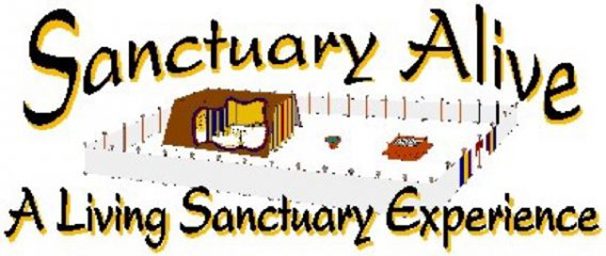KORENKO
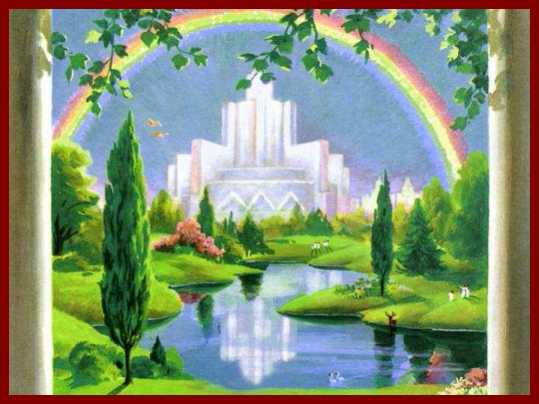
Introduction
After Adam and Eve had sinned in the Garden of Eden and eaten the fruit, God met with them and promised them a way to salvation. He had already planned for that contingency when He created the earth. All that was left was to put that plan into action but to do so prematurely would be ineffective.
Before We Begin
Dear Jesus, we ask for your Holy Spirit to come and give us wisdom as we study your word. Show us your truth and your paths. Amen.
God Is On Trial
When Lucifer sinned in heaven and became Satan, He accused God of being unfair and dictatorial. Because God is righteous, just and merciful, He could not fight Satan on his terms because Satan can use deception, lies and anything else he wants to. God not only had to fight and destroy Satan, He had to do it in such a way as to vindicate His character before all the
angels and all other heavenly beings. To do so required a sacrifice on God’s part. That sacrifice was His Son, Jesus.
But in order for God to win, the entire universe has to see the effects of sin. They have to realize that sin leads to death and God’s righteousness and love lead to life. Sin has to be so abhorrent to the beings in the universe that it will never arise again throughout eternity. When the time is right, the entire universe will decide that the eradication of sin is best for everybody. Even Satan will have to agree that God’s way is the best way.
This plan of salvation needs time to develop so that everyone involved sees the essentials. From God’s viewpoint, this happens quickly but from our viewpoint, it seems like it will never happen.
Note: The next few paragraphs cover the Books of Genesis and part of Exodus. They are here to give continuity to the story between the fall of Adam and the Exodus of Israel from Egypt.
God Lets Satan’s Plan Develop
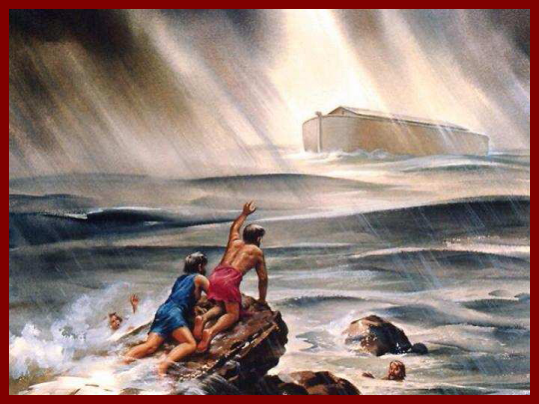
When Adam and Eve were sent from the Garden of Eden, they looked for the promised Savior in each of their children. However, their firstborn Cain, became the first murderer. God allowed Satan free rein on this earth for about 2,000 years, until in Genesis 6:5 it says, “And GOD saw that the wickedness of man was great in the earth, and that every imagination of the thoughts of his heart was only evil continually”.
God decided to destroy all the wickedness on the earth with a flood with the exception of eight people, Noah, who God found righteous (Genesis 6:8-9), and his family. Notice that as soon as the ark was safe and they got back on dry land, one of Noah’s sons committed sin (Genesis 9:21-24), and the whole cycle started all over again.
God Chooses Abraham
The Bible doesn’t say much about this next period of time except to say that sin flourished. But in the middle of all this sin, God finds a righteous man, Abraham. God makes a covenant with Abraham and promises that the Savior will come through his
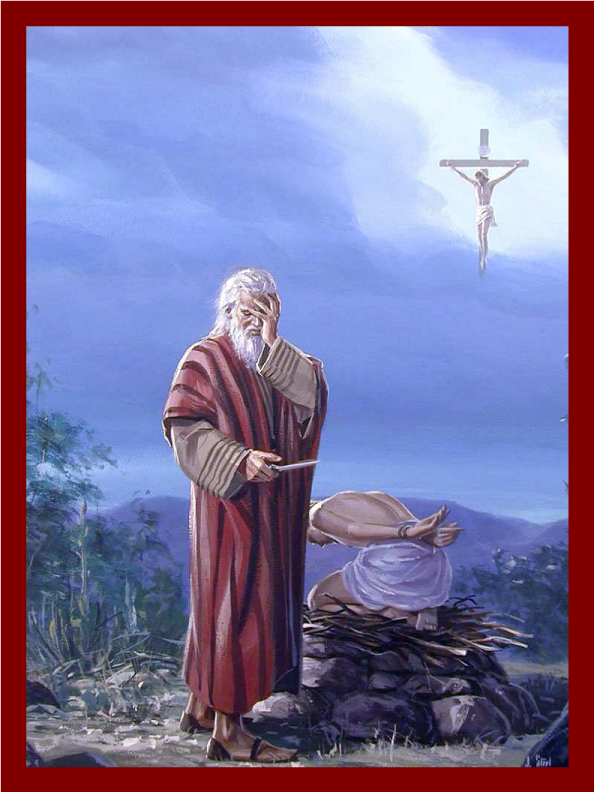
offspring, and that his children will be as numerous as the stars in the sky. One problem, Abraham’s wife is way too old to have children. So, instead of waiting for God, he and his wife work things out through her maid, and Ishmael is born. The world has been suffering the consequences of that decision, ever since, even to this day. Finally, God gives Abraham and Sarah a son, Isaac. Then God tests Abraham by asking him to kill his own son as a sacrifice. At the last minute, he is stopped and a ram is provided for the sacrifice. But this sacrifice of Isaac was pointing forward to the sacrifice of God’s own son, Jesus.
Abraham’s children were to be like the stars in the sky. But Abraham had only one son, and that son had only two sons. And of the two sons, one of them, Jacob had twelve sons. So Abraham did not see the blessing promised to him by God but he believed.
Time Marches On
Jacob, who was renamed Israel by God, had twelve sons and God led them into Egypt. God needed time to multiply His people, so He left them in Egypt for many years. During that time, Israel’s children multiplied. Soon, the Egyptians were afraid of the Israelites and made them slaves. God selects Moses to lead the children of Israel out of Egypt in the event known as The Exodus. The only problem was that God’s people did not know Him.
As the Israelites stayed in Egypt, they forgot who God was and started to worship the gods of the Egyptians. God had to retrain His own people to believe and trust in Him. Part of that training occurred in Egypt when God used the ten plagues to get Pharaoh to release the Israelites. He continued that retraining by placing them in impossible situations in the desert. His people had to learn to depend entirely on Him for everything. Today, we also need to learn to depend TOTALLY on God for everything.
Mount Sinai
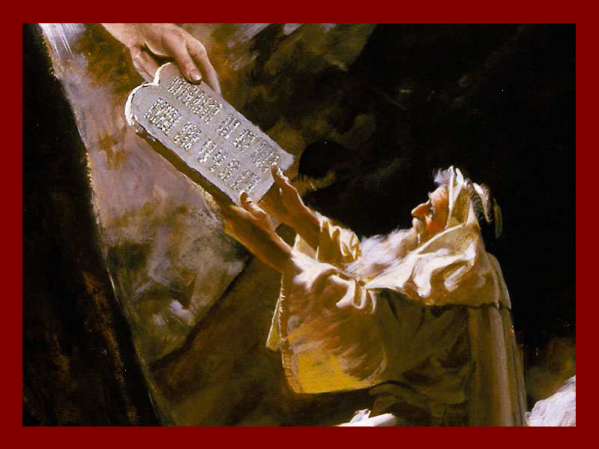
After wandering in the desert for a while, God finally brought His people to Mt. Sinai where He personally spoke to them from the mountaintop. Through Moses, He also gave them His Law, the Ten Commandments, and other laws (known as the Mosaic laws), by which to live. At the same time, God gave Moses the blueprint for the plan of salvation.
The Blueprint
If you read Exodus chapters 25-31, you can see the plans that God gave to Moses to build a sanctuary for God to dwell with His people. You will remember that we talked a little bit about the sanctuary in Lesson Two, and that the earthly sanctuary is a copy of the heavenly sanctuary
(Hebrews 8:2). In Leviticus 1-10 you can read about the various offerings and sacrifices that God ordained. A short version of this can also be found in Hebrews 9:1-10.
The Importance of the Sanctuary
Of all the topics covered in the Bible, the sanctuary is by far the most pervasive. More chapters in the Bible are devoted to the sanctuary than to any other topic. In addition, almost all the other doctrines are based on some aspect of the sanctuary. Because of its importance, Satan focuses his attention on this area and attacks the sanctuary and what it represents because a knowledge of the sanctuary and its truths will help the individual understand the character of God. In addition, a knowledge of the sanctuary helps to unlock the book of Revelation. Anybody who tries to study
the book of Revelation without understanding the sanctuary and its services, will be misled and develop theories that are not scripturally based.
The Sanctuary
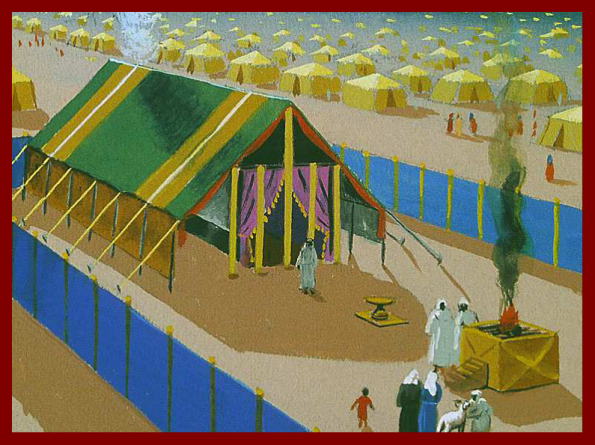
God requested the Israelites to build the sanctuary that “I may dwell among them”, Exodus 25:8. The sanctuary followed the pattern set down by God.
As you can see in the picture, the outer courtyard was enclosed with a curtain. The entrance to the courtyard was always from the east. In this courtyard was the Altar of Sacrifice, the Laver and the Sanctuary itself.
The Sanctuary was composed of two rooms, the Holy Place and the Most Holy Place.
The Holy Place contained three articles of furniture; The Table of Showbread on the north side, the Seven-branched Candlestick on the south side and the Altar of Incense in front of the veil separating the Holy Place from the Most Holy Place. The veil that separated the two compartments did not reach the top but allowed the smoke from the Altar of Incense to drift over into the Most Holy Place. The
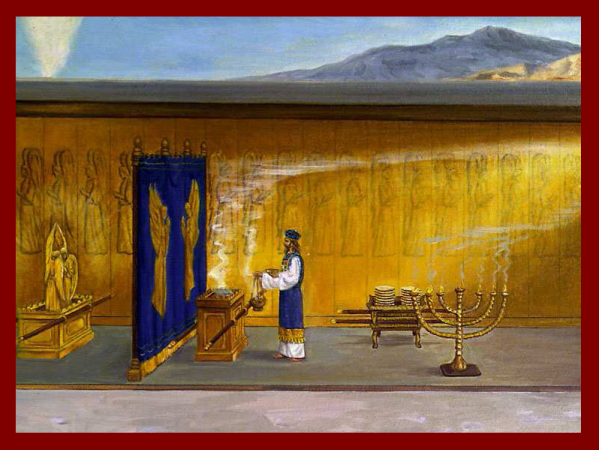
Most Holy Place contained only one article of furniture, the Ark of the Covenant. Inside the Ark were the 10 commandments, Aaron’s budded rod and a bowl of manna (Hebrew 9:4). On top of the Ark was the Mercy Seat where God dwells and also on top on each side, a cherubim looking down at the Mercy Seat (Exodus 25:20-22).
The Sanctuary Services (See Leviticus 1-10)
The priests officiated in the sanctuary on a daily basis and entered the Holy Place daily but the Most Holy Place was entered only once a year in a special ceremony. The bread was baked hot and replaced every Sabbath on the Table of Showbread. The old bread was then eaten by the priests. The Seven-branched Candlestick was continually burning and the priest replenished the oil daily. The Altar of Incense also had incense added so the incense continually ascended (Exodus 30:7-8).
When a person brought a sacrifice such as a lamb, a goat, a bull, or other to the sanctuary, the animal had to be perfect. If a person sinned, they were to place their hands on the head of the animal, transferring their sin to the animal. The animal was then killed and sacrificed on the Altar of Sacrifice. Based on whether the sacrifice was for a priest or a common person, the blood was either placed on the horns of the Altar of Incense and sprinkled before the veil, or it was placed on the horns of the Altar of Sacrifice and sprinkled on the ground at the base of the altar.
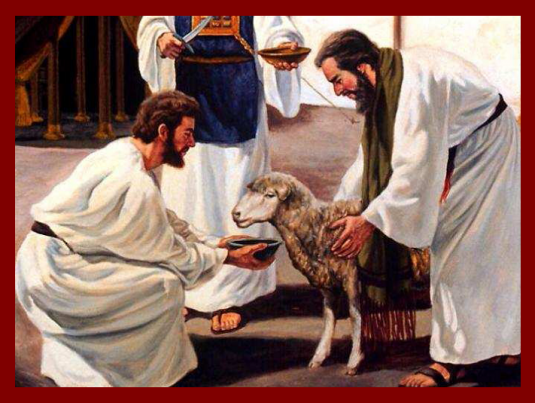
Once a year the priests officiated at a special ceremony called the Day of Atonement. We will cover this in a later lesson.
The Significance of the Sanctuary Services
The earthly sanctuary, in addition to being a copy of the heavenly sanctuary, pointed forward to the sacrifice of Jesus. The perfect lamb that was provided represented the perfect Lamb of God. The blood of the lamb represented the blood of Jesus. The act of killing the lamb and transferring
the sins to the sanctuary did not save the sinner. What saved the sinner then, as today, was faith in the sacrifice of Jesus. By following the proscribed acts, the sinner showed that he believed in the future sacrifice of Jesus.
Unfortunately, after some time, the people forgot the symbolism and
believed that the act itself was the source of salvation. That is what Jesus found when He came about 1,500 years later.
Symbolism In The Sanctuary
There is much symbolism in the sanctuary and the articles of furniture. In Psalms 51:16-17, we see that the Altar of Sacrifice represents repentance. When the sinner came into the courtyard, the first place he went to was the Altar of Sacrifice.
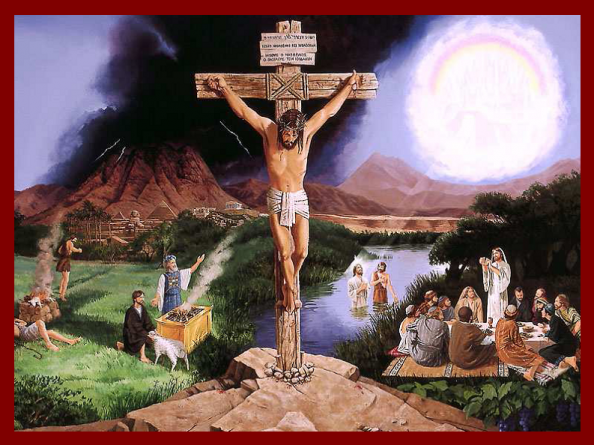
The Laver, which was a basin used by the priests to wash the blood from their hands, represents baptism, which is a cleansing from sin through immersion (Acts 19:4, Romans 6:4)
The Table of Showbread represents the Word of God (Mark 14:22: John 1:1; Matthew 4:4; 16:12),
The Seven-Branched Candlestick represents witnessing (Matthew 5:16)
The Altar of Incense represents the prayers of the saints (Psalms 141:2, Revelation 8:3-4).
And finally the Ark of God represents His Law, His government and His mercy.
Items of Interest
The path of the sinner is through the sanctuary. Repentance, baptism, study the Word, prayer, witnessing and &finally we come to God before the mercy seat and His Law.
If you draw lines connecting the Ark with the Altar of Repentance, and the table of Showbread with the Candlestick, you get a cross. At each piece of furniture, you have the wounds suffered by Jesus on the cross. The Altar of Sacrifice, His feet, The Laver, the wound in His side (blood mixed with water), the Table of Bread and the Candlestick, His hands, The Altar of Incense, His broken heart and the Ark, the crown of thorns.
Jesus was born in a manger with the animals (the courtyard), he was
baptized (the Laver), he was tempted three times (bread, candlestick & Altar of Incense) and He taught the people about God’s Law (the Ark).
Jewish Festivals
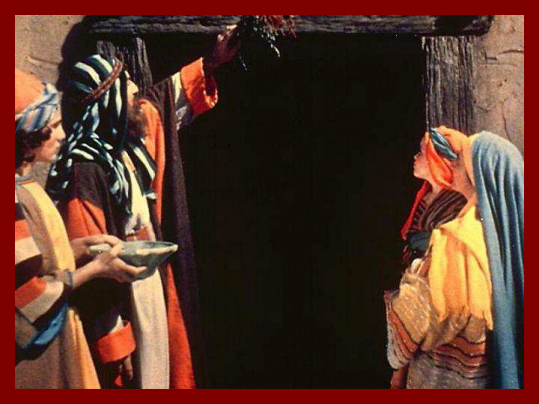
In addition to the sanctuary services, there were a number of feasts and festivals.
The first feast of the year was the Passover which was held on the fourteenth day of the first month. This was to celebrate the exodus from Egypt and to remember the mercy of God in sparing the first born. The angel of death spared every household that had sprinkled blood on the lintel of the door. They were to eat a lamb cooked in bitter herbs, with none of its bones broken. The lamb represented Jesus who was killed but none of His bones were broken. (Exodus 12, Leviticus 23:5, Numbers 9:1-14 and Deuteronomy 16:1-7)
The day after Passover was the first day of the Feast of Unleavened Bread. This feast continued for seven days with the first and seventh day set aside as a ceremonial Sabbath with no work to be done on those days. There was to be no yeast in the houses during this feast. Yeast represents sin. (Exodus 12:15-20, 13:5-9, Leviticus 23:6-8 Numbers 28:17-25 and Deuteronomy 16:8)
The second day of the Feast of Unleavened Bread, or the second day after the Passover, was the Ceremony of the Wave Sheaf. A sheaf of grain or an omer of barley was waved before the Lord with an offering of a lamb and a meal offering. This represented the first fruits of the harvest to be dedicated to the Lord. (Leviticus 23:10-14) Fifty days after the wave sheaf, the Israelites celebrated the Day of Pentecost. This was the end of the harvest. This day was a ceremonial Sabbath with no one working, and represented the first fruits of the harvest.(Leviticus 23:15-21, Numbers 28:26-31, Deuteronomy 16:9-11).
On the first day of the seventh month was the Blowing of Trumpets. This was a call to prepare for the Day of Atonement nine days later. The people would prepare their hearts and put away all sin so that when the Day of Atonement came, their sins would be in the sanctuary and cleansed from the sanctuary on that day. This day was a ceremonial Sabbath. (Leviticus 23:24-25, Numbers 29:1-6).
Nine days later on the tenth day of the seventh month, the Israelites celebrated the Day of Atonement. This day was a ceremonial Sabbath on which the people were to pray and afflict their souls. This was the holiest day of the year for the people and the priests. This is a very significant service and we will cover this in a later lesson when we are in the book of Revelation. (Leviticus 16, Leviticus 23:27–32, Numbers 29:7–11).
Five days after the Day of Atonement was the Feast of Tabernacles. This was held on the 15th to the 21st days of the 7th month. The first day of the feast was a ceremonial Sabbath. During this time the people lived in booths made of branches to remember the time that God brought them out of Egypt, Leviticus 23:34–43, Numbers 29:12–34, Deuteronomy 16:13–15).
The eighth day of the feast or the 22nd day of the 7th month was a ceremonial Sabbath, (Leviticus 23:36, 39, Numbers 29:35-38)
Ceremonial Sabbaths
The Israelites kept the 7th day (Saturday) of each week as the Holy Sabbath day. The ceremonial sabbaths of the various feasts however, could fall on any day of the week. Even though they fell during the week days, they were celebrated in the same way as the 7th day Sabbath, with no work done and the people rested. These ceremonial sabbaths are the sabbaths that Paul talks about in Colossians 2:16. At that time, Paul knew that these sabbaths were no longer required because the death of Jesus had done away with the system of sacrifices’ and feasts.
The Importance of the Festivals
You’re probably wondering why we have spent so much time on these services and festivals. Remember that all of these were designed to lead the Israelite to Jesus. When Jesus came, He fulfilled some of these services and feasts.
1. Jesus was killed on Passover as the spotless Lamb. Passover happened to fall on a Friday that year.
2. He rested on the next day which was both the Jewish Sabbath and the ceremonial Sabbath of the feast of unleavened bread.
3. The second day of the feast of unleavened bread, He ascended up to His Father as a symbol of the Wave Sheaf or first ripe grain picked before the harvest. (John 20:17)
4. Pentecost represented the end of the harvest. Fifty days after Jesus was resurrected the Holy Spirit was poured out on the disciples (Acts 2:1-4). Jesus spent 40 days on earth after His resurrection to teach His disciples (Acts 1:3) before He ascended to Heaven. After Jesus was gone, the disciples met together and prayed until the Holy Spirit was given to them 10 days later (Acts 1:8, 2:4). When Jesus ascended into heaven, He took the first fruits of the resurrection with Him to present to God the Father, the ones who had been resurrected when He was (Matthew 27:52-53).
As we get to a later lesson we will revisit the feasts again. As you can see Jesus fulfilled the Passover, the Wave Sheaf and Pentecost. The remaining festivals are Blowing of the Trumpets, The Day of Atonement and the Feast of Tabernacles. We will see the significance of these, later in the these Studies
A Shadow of The Real
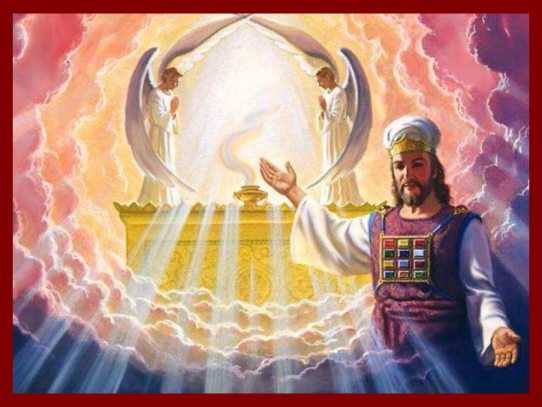
The earthly sanctuary and its services and feasts represented to the people a shadow of the real sanctuary and its services in Heaven. When Jesus came to earth, He followed and fulfilled the services and feasts. Since this earth is not yet over, it becomes obvious that the earthly services not fulfilled by Jesus on earth, will be fulfilled by Him in Heaven. Our study on the earthly sanctuary and its services and feasts help us understand how these services and feasts will be fulfilled as the earth draws to a close.
Review
1. God gave Moses the plan for the earthly sanctuary.
2. The earthly sanctuary is a copy of the heavenly sanctuary.
3. The sanctuary services pointed forward to the time when Jesus would die for the sins of the world.
4. The festivals and feasts helped people focus on various aspects of Jesus life and ministry.
5. A knowledge of the sanctuary services along with the feasts and festivals helps us to understand the book of Revelation and finally events.
6. Since God uses the sanctuary to show us the way to salvation, Satan’s attacks against God and man will be to undermine and pervert our knowledge of God’s plan.
How Does This Show God’s Love For Us?
God has provided a way for salvation for anyone who is interested. All we have to do is accept Him as our Savior and He is willing to go from there. Although He started with Abraham and blessed Him (Genesis 13:15 -18), He transferred the blessing to Abraham’s son Isaac (Genesis 26:1-4) and then to Isaac’s son Jacob or Israel (Genesis 28:12-15; 35:10-12). But He didn’t stop there. He again transferred the blessings to the Gentiles (Galatians 3:14). The only condition is that we believe as Abraham be lived (Galatians 3:7-9).
Notice that the blessing was given to Isaac who was the second born and to Jacob who was the second born. The blessing is given to us if we are the “second born” (John 3:1-6). Ishmael and Esau were both born of the flesh because they were not interested in spiritual things, while Isaac and Jacob were born of the spirit because they were interested in spiritual things. If we are born of the spirit, we get to share in the blessings of Abraham, eternal life.
Other Reading
Wikipedia has an article on Moses and provides many links to other areas of interest. Also you may want to read Leviticus 23 as it summarizes in one chapter the entire plan of salvation as shown in the Jewish feast and festivals.
